The first people who came to the Galapgos Islands had one concern.
Scratch that. The first people who came to Galapagos were probably Incas who looked around and said, we’ve already got volcanoes at home what do we need this place for? At least, that’s how our tour guide Xavier explained it yesterday as we hiked north from the Sierra Negra Volcano crater across the path of two major lava flows (the more recent from 1979) to a side-spout called El Chico Volcano.
There certainly are plenty of volcanoes here: five major ones on Isabela Island alone. The one we toured yesterday has at least 100 “lava chimneys” or holes of various sizes that reach way down to where all the action is at. Sierra Negra last erupted in 2005, though not nearly as spectacularly as in ’79 when thousands of acres were covered with lava over a span of three months.
The Incas likely went home pretty quickly.
What I meant to say was the next wave of people who came here — fishermen and whalers in the 1500s or so — had one concern. Well, from my experience I can say they probably had several concerns, like: I hope my kids don’t fall into that volcano; and How can I keep sand from destroying our sole remaining camera? But they had one main concern, and this is supported by our guide, Xavier: How were they going to make money off this place?
It was not an easy question to answer. The place is beautiful and it looks like it should be a money pot, but mining salt and sulfur didn’t really cut it. It was too far offshore to be a real productive exporter of fish (though fish did factor into the eventual answer, as you’ll see).
It was still very sleepy here when Darwin toured it in the mid 1800s. In fact this Island — the largest in the archepelago — had only a couple hundred residents as the last millennium mark approached. Now, though, Xavier says the population was more than 2,000 ten years ago when the last census was taken, and he estimates that there are more than 5,000 people living here now.
Of course tourism is the main engine for growth here, and all of the tours we’ve been on have been fabulous. Each one is different from the one before. Each guide is extremely knowledgeable and personable.
But I have come to consider the tours, and all of the daytime stuff here — the beaches and animals and such — to just be time-killers for the real main even on Isabela: $7 dinner.
That’s right, each night we cruise Calle Antonio Gil’s restaurant row and peruse the placards offering the day’s set menu items. At least five restaurants do this, all offering slightly different stuff but all basically the same three-course menu (and juice!) for seven bucks. Except one that sets its price at $6.50.
I ask you: Can you beat that?
Granted, it’s not a big dinner, but it’s big enough. We don’t have the facilities to deal with leftovers, anyway. There’s generally enough variation on the small menu of the day to keep everyone happy. I get fish; several other people get shrimp (at one place the shrimp option costs a little extra), Nadia and maybe someone else gets chicken or meat. There are various sauces. We get bowl of soup before the entree, a nice glass of juice, several side dishes, and a postre (Spanish for dessert).
We did run into trouble one night when no place had a viable non-fish option. And one night two girls decided to split one of the fixed price entrees and a pasta dish off the regular menu. Regular menu options not only tend to be more expensive, they also include neither juice nor postre. Once everybody but me shared a $25 pizza, but I was the only one who got juice and dessert (it was Jello). Get this, way back on the first night before we really figured things out, everyone ordered drinks on top of our set price menu. We must’ve looked like a bunch of tourists!
While every night the dinner bill has been $50 or below with tip, it wasn’t until last night that we finally hit the sweet spot with a $35 bill. Tonight I plan to shake things up a little by requesting menestra, or beans, instead of the french fries — at no extra cost, mind you.
How do you make money off me in the Galapagos? $7 at a time.
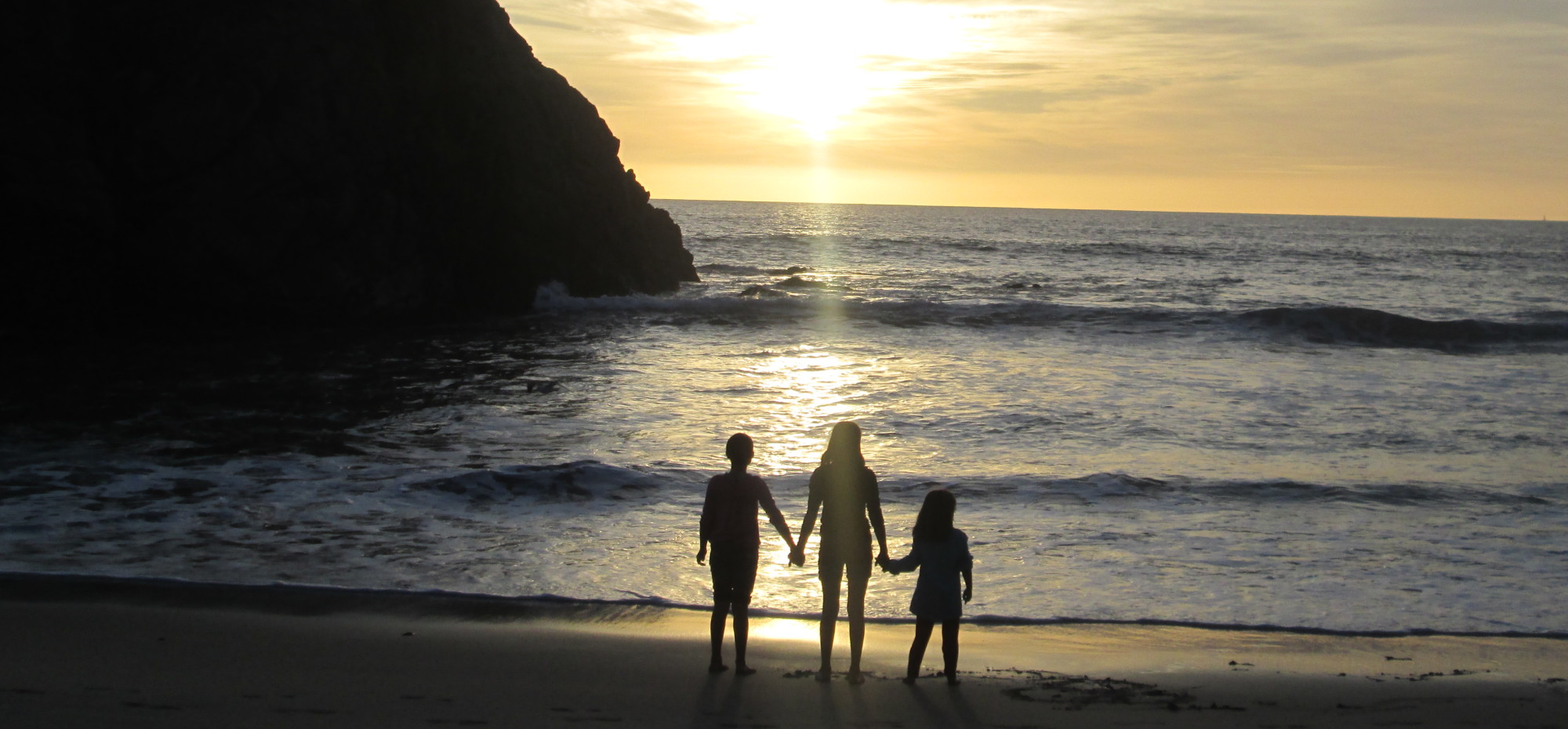
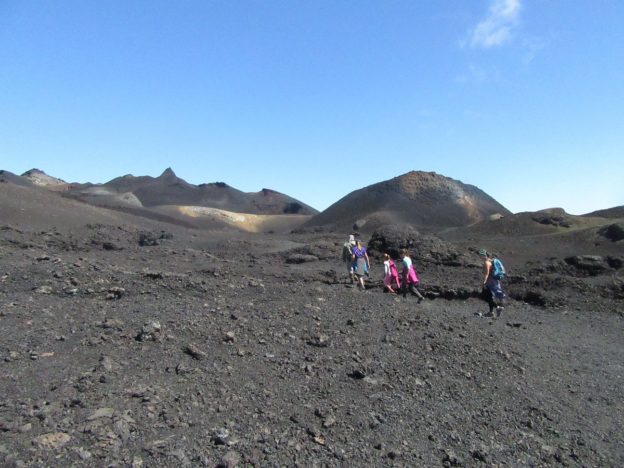
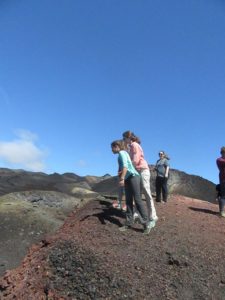
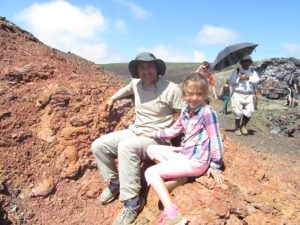
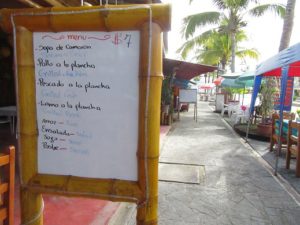
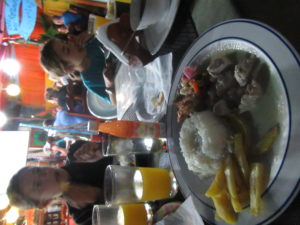
Enjoyed your history lesson since I knew absolutely nothing about the Galapagos. Had a good laugh at your dining experiences.